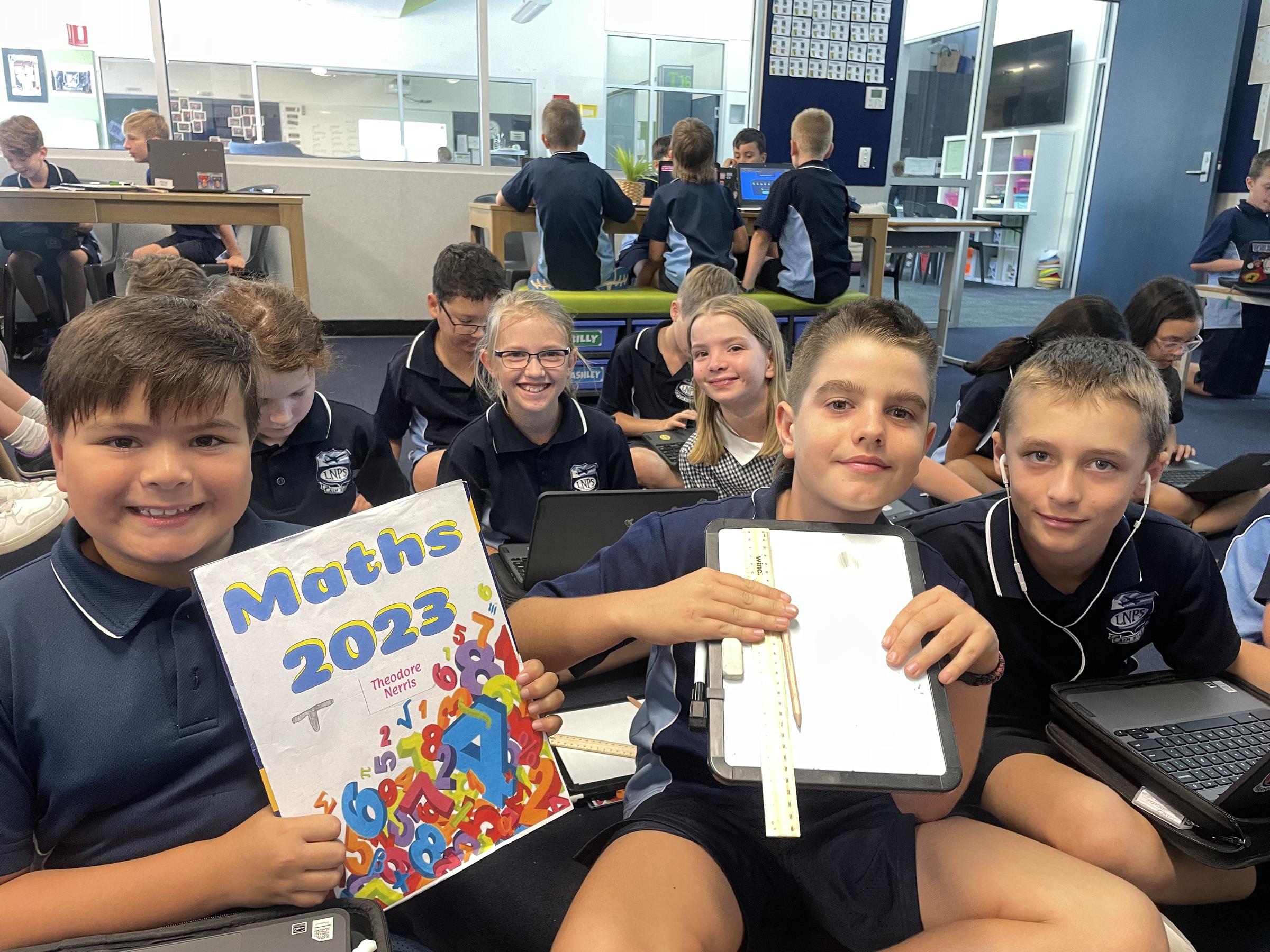Maths
Year 3 students will be taught by Mrs McCulloch, Ms Semler and Mr Bayly
Year 4 students will be taught by Mr Clayton and Miss Bruorton

Maths
Year 3 students will be taught by Mrs McCulloch, Ms Semler and Mr Bayly
Year 4 students will be taught by Mr Clayton and Miss Bruorton
Learning Intentions:
We are learning about fractions.
We are learning to partition numbers.
We are learning the vocabulary of fractions.
In this unit, students will model and represent fractions ½, ⅓, ¼, ⅛ and ⅕ and their multiples to a complete whole, as well as other commonly used fractions. Students will partition areas, lengths, and collections to create a range of unit fractions and their multiples and locate unit fractions and their multiples on a number line. They will establish terminology for the way in which fractions are recorded, including numerator, denominator, parts, whole and equal. Students will begin to explore equivalent fractions with like denominators.
Learning Intentions:
We are learning about measurement.
We are learning to identify the measurable attributes of everyday objects.
We are learning the vocabulary of measurement.
In this unit, students develop an understanding of the purpose and use of measurement in real world situations. They will use a range of standard and non-standard units to measure, order and compare length, mass, and capacity. Students will recognise the importance of using common units of measurement as a benchmark to improve and check the reasonableness of estimates. Students will develop an understanding of units of measurement used for length, mass, and capacity. They will recognise, use, and convert centimetres and metres, grams and kilograms, and millilitres and litres.
Learning Intentions:
We are learning how to understand data.
We are learning to interpret data.
We are learning vocabulary relating to data.
In this unit, students develop an understanding of the process of statistics and how this is used in real-world scenarios. The students will participate in explicit and whole class inquiries that model the following 4-step process: Asking a question, collecting data, displaying data and analysing data. Each step of the process is modelled explicitly with students being exposed to a wide range of methods to enable them to complete their own data investigation.
Learning Intentions:
We are learning to identify and understand the properties of shapes.
We are learning about symmetry.
We are learning to identify angles.
We are learning vocabulary relating to shape.
In this unit, students develop an understanding of geometric properties of both 2D and 3D shapes and learn to identify them in the natural and built environment. They use these properties to classify shapes. Through an understanding of 2D shape, students will explore combining and splitting shapes, transformations, symmetry, and angles. Students will also make and model 3D shapes and investigate drawing 3D objects from different viewpoints.
Symmetry and angles are further explored in the natural and built environment. Students develop skills in creating and using grid co-ordinates to locate positions and identify pathways using co-ordinates. They identify the key features of maps and create maps of their own.
Learning Intentions:
We are learning about patterns.
We are learning to solve problems.
We are learning to justify our understandings.
In this unit, students will investigate a range of patterns resulting from multiplication. They will create and solve worded problems with number sentences using a range of operations. Students will understand that addition and subtraction are inverse operations and use knowledge of addition and subtraction facts to find unknown quantities in number sentences.
Students will apply this knowledge, understanding and skills to a range of contexts, including authentic problems, narratives and abstract ideas. They will be introduced to and engage with multiple problem solving strategies, including manipulation of concrete materials, arrays (prior knowledge) and the bar model.
Learning Intentions:
We are learning about measurement.
We are learning to identify the measurable attributes of everyday objects.
We are learning the vocabulary of measurement.
In this unit, students develop an understanding of the purpose and use of measurement in a range of real-world situations. They will use a range of scaled measurement instruments to measure and compare the length, area, mass, volume and temperature of spaces and objects. Students will develop an understanding of units of measurement used for length, area and volume and begin to generalise methods to finding perimeter, area and volume. They make connections between perimeter and area. Students will
apply their understanding of area to measure and compare regular and irregular shapes.
Learning Intentions:
We are learning about data.
We are learning the vocabulary of statistics.
We are learning properties of time.
In this unit, students will explore the ways in which we collect, represent, and analyse data. They will analyse a range of graphical representations of data and determine the methods in which the data may have been collected and for what purpose. Students learn how to accurately construct column and picture graphs. They design data collection methods to investigate data of their peers in comparison to data collected in the New Zealand Census at Schools and reflect on the effectiveness of their data displays.
Students will explore ‘am’ and ’pm’ time. They will convert between time units and use this knowledge to solve simple time problems. Students develop timelines using technologies and make calculations to determine the duration of events.
Learning Intentions:
We are learning to identify properties of shapes.
We are learning about symmetry.
We are learning about angles.
In this unit, students develop a deeper understanding of the classification of 2D and 3D shapes by their geometric properties, including sides, angles, and parallel lines. They create and identify 2D shapes from the combining and splitting of polygons.
Students further investigate symmetry, including line and rotational symmetry. They classify angles by size, using their mathematical names, and use measuring tools to measure angles by degrees. Students identify the key features of maps and create their own simple maps using cardinal directions.